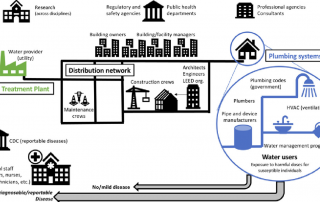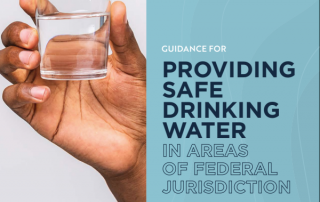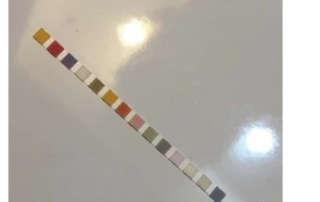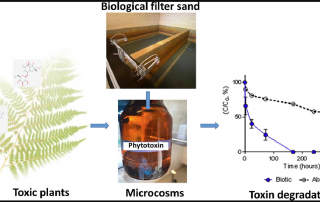Stay in the know on all things drinking water


Dr. William B. Anderson retired on January 1, 2025. He maintains a connection to the Water Science, Technology & Policy Group through an adjunct professorship to guide his remaining graduate students through to their degree completion. He was previously a Research Associate Professor and the Associate Director of the group. He has been active in drinking water quality and treatment research for over 45 years, more recently focusing on contaminant adsorption to microplastics, microplastic removal through chemically assisted filtration, pathogen removal, perfluorinated compounds, cyanobacteria and their toxins, and biological filtration. He has served on the Boards of Directors of the Ontario Water Works Association (OWWA) and the Walkerton Clean Water Centre and currently serves on the OWWA Advocacy Steering Committee and the Canadian Water and Wastewater Association Drinking Water Quality Committee. Please note that Dr. Anderson is no longer accepting graduate students.
The past 15 years, Bill has maintained an email service drawing attention to items of interest to drinking water professionals including, for example, the latest research articles, regulatory updates, outbreak reports, topical issues, and media stories. Bill’s email service has expanded over time to include all interested individuals. These emails are now also archived here in a blog format as they are released, which can be explored by category or simply by scrolling through the posts below.
If you would like to join Bill’s email list for updates straight to your inbox, you can send an email to Bill to be added to the list.
Tenets of a Holistic Approach to Drinking Water-Associated Pathogen Research, Management, and Communication
A holistic approach will (i) target multiple microorganisms simultaneously, (ii) involve experts across several disciplines, and (iii) communicate results across disciplines and more broadly, proactively addressing source water-to-customer system management.
Guidance For Providing Safe Drinking Water in Areas of Federal Jurisdiction
This document is intended to provide technical guidance to assist federal departments meet their legislative obligations. It takes into consideration the unique circumstances faced by many departments in order to best protect human health
Drinking Water Quality Guidelines across Canadian: Jurisdictional Variation in the Context of Decentralized Water Governance
review identifies key differences in the regulatory approaches to drinking water quality across Canada’s 13 jurisdictions. Only 16 of the 94 CDWQG are consistently applied across all 13 jurisdictions; five jurisdictions use voluntary guidelines, whereas eight use mandatory standards.
A pilot study on the feasibility of testing residential tap water: Implications for environmental justice and health
The article offers a very different perspective, using citizen scientists and addressing implications for environmental justice and health.
Removal of phytotoxins in filter sand used for drinking water treatment
researchers from Denmark are studying phytotoxins – those produced by plants – from the potential of them being contaminants with the potential to impair drinking water quality. Of several different phytotoxins spiked into groundwater and ultimately treated by 5 different filter types, two of them, jacobine N-oxide and senecionine N-oxide, were found to be non-biodegradable. They were also able to identify some degradation products.
Drinking Water DBPs & Congenital Malformations
The study examined 623,468 births and concluded that “TTHM exposure was associated with the increased risk of malformations of the nervous system, urinary system, genitals, and limbs in areas exclusively using chloramine. An association between chloramine-related chlorination by-products and congenital malformations has not previously been highlighted and needs further attention.”






